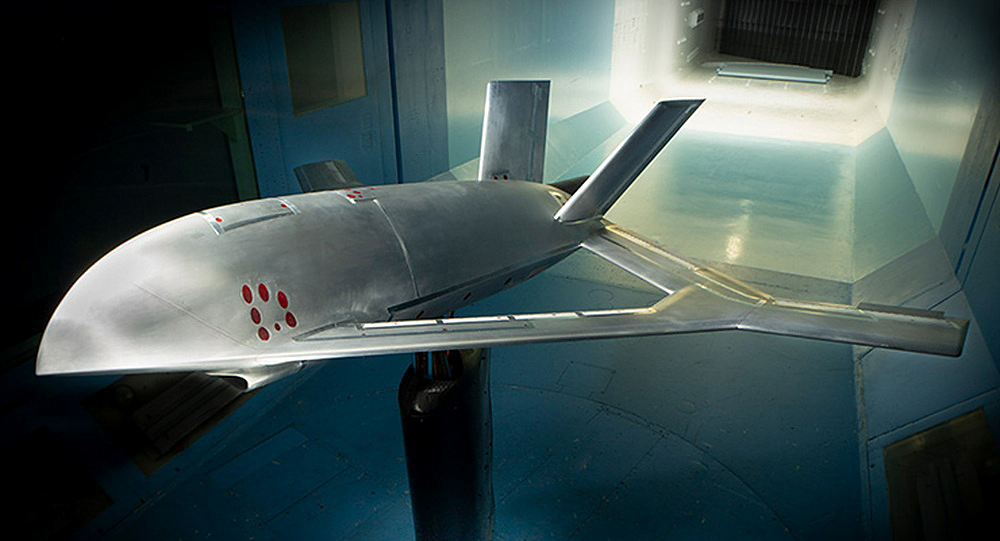Defensenews.com reported that the Defense Advanced Research Projects Agency (DARPA) has taken a major step forward toward creating an experimental airplane that can be maneuvered without traditional ailerons or other mechanical devices, instead using short bursts of air. DARPA has tapped Aurora Flight Sciences, a Boeing subsidiary, to start detailed design of an experimental aircraft that uses air bursts to maneuver.
DARPA selected Aurora Flight Sciences to start detailed design of an aircraft that uses a technology called active flow control to direct it, as part of the Control of Revolutionary Aircraft with Novel Effectors, or CRANE, program. Aurora is a subsidiary of Boeing headquartered in Manassas, Virginia, that specializes in developing advanced innovative designs for aircraft and uncrewed systems.
“Over the past several decades, the active flow control community has made significant advancements that enable the integration of active flow control technologies into advanced aircraft,” CRANE program manager Richard Wlezien said in a statement. “We are confident about completing the design and flight test of a demonstration aircraft with AFC as the primary design consideration. With a modular wing section and modular AFC effectors, the CRANE X-plane has the potential to live on as a national test asset long after the CRANE program has concluded.” DARPA hopes the active flow control concept, if successful, could prompt a major rethinking of how planes are built and maneuver.
Active flow control technology would use small bursts of air from a wing or other air foil surface to shift the aircraft’s position or direction. The burst itself is not pushing the wings under this concept, he said, the way a spacecraft uses thrusters to nudge it into position in orbit or during re-entry. Instead, an active flow control burst creates something of a speedbump that alters the way air flows over the wings, which then causes the aircraft to shift.
“It’s very energy-efficient,” Walan said. “Because I’m using the natural way the air wants to move, I’m injecting just a little bit of energy into it to get a big effect out of it. We’re not actually pushing the vehicle with air, we’re using it to tailor how the air is flowing over the wing.”
The aerospace community has considered this concept for at least three decades, he said, and tried laboratory experiments and some small-scale flight demonstrations. In 2015, NASA and Boeing teamed up to successfully fly a 757 aircraft modified with a vertical tail that used active flow control technology for increased aerodynamic efficiency. So far, Walan said, no one has tried to control an entire airplane using this technology. If DARPA decides to move forward into the next phase, Aurora would build a full scale demonstrator with a 30-foot wingspan, and would aim to conduct flight tests in 2025.
In recent years, he said, DARPA felt the technology — including supercomputers and advanced fluid dynamics tools, and drone aircraft that could make demonstrating active flow control much cheaper and safer than testing it on manned planes — had developed to a point where “the time was right to try to see if we could design an airplane around this.”
DARPA also had to show this technology isn’t just something that “sounds cool,” he said, but could yield tangible benefits over the traditional system.
In its Tuesday statement, DARPA said this technology could improve how aircraft fly in several ways, including by eliminating moving surfaces to control the plane, reducing drag, thicker wings for structural efficiency and increased fuel capacity, and simplified systems to improve an aircraft’s lift. Walan said in 2021 that it could also lead to lower costs and increased aircraft agility. Aurora has now completed the project’s Phase 1, a preliminary design phase that yielded what DARPA described as “an innovative testbed aircraft” that successfully used active flow control in a wind tunnel test.
Aurora will now move into Phase 2 under the $42 million contract, where it will create a detailed engineering design for its plane and develop flight software and controls. This will end with a critical design review of an “X-plane” demonstrator that will fly without traditional flight control surfaces on its wings or tail. If the concept does work, Walan said, it could be a “disruptive” technology — and even upend how future aircraft are designed. Watch a video here. See Defensenews.com for details.
The post X-plane Drone Maneuvers with Air Bursts appeared first on RotorDrone.

